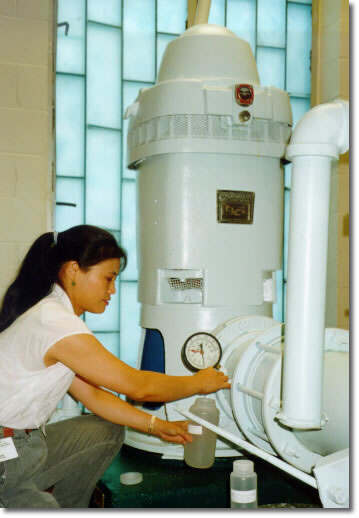Drinking Water Protection
- Drinking Water Protection Home
- About Us
- A-Z Index of Contaminants in Water
- Community Public Water Supply
- Drinking Water Institute
- Drinking Water Revolving Fund
- Noncommunity Public Water Supply
- Source Water Protection
- Water Operator and Certification Training
- DWP Contacts
Related Topics
- Annual Reports
- Drinking Water Risk Communication Toolkit
- Fact Sheets
- Forms
- Invisible Heroes Videos: Minnesota's Drinking Water Providers
- Noncom Notes Newsletter
- Sample Collection Procedures (videos, pictures, written instructions)
- Waterline Newsletter
Related Sites
- 10 States Standards
- Clean Water Fund
- Health Risk Assessment – Guidance Values and Standards for Water
- Minnesota Well Index
- Water and Health
- Wells and Borings
Environmental Health Division
Basics of Monitoring and Testing of Drinking Water in Minnesota
Download a print version of this document:
Basics of Monitoring and Testing of Drinking Water in Minnesota (PDF)
- Who keeps track of drinking water quality in Minnesota?
- What is tested for—and how often?
- What happens if something is found in the water?
- How are the samples taken?
- Learn more
Who keeps track of drinking water quality in Minnesota?

Monitoring the quality of drinking water in public water supply systems (those that supply water to the public) is a joint responsibility of the Minnesota Department of Health (MDH) and the state’s public water supply systems. Local water supply systems are responsible for taking some of the required water samples, according to a schedule established by MDH. MDH staff collect the remainder of the required samples. Certified laboratories test the water samples for a broad variety of possible contaminants.
When it comes to complying with the testing requirements of the federal Safe Drinking Water Act, Minnesota has one of the best records in the nation.
Go to > top
What is tested for—and how often?
Minnesota’s public water supply systems are tested on a regular basis for bacteria, nitrate and other inorganic chemicals, radiological elements, and up to 118 different industrial chemicals and pesticides. The exact list of contaminants—and the testing schedule—vary from one system to another.
A number of factors help determine which chemicals are tested for—and how often. If a particular chemical or pesticide isn't used in an area, a use waiver may be granted. This means that a local water supply system may not have to test for that particular contaminant. Such waivers are relatively uncommon, but they are sometimes granted for certain types of contaminants.
The Minnesota Department of Health also does assessments to determine how vulnerable a particular water supply may be to a specific contaminant. These vulnerability assessments take a number of factors into account:
- Are there natural geologic barriers that would tend to protect the water from contamination?
- How are the water wells in a particular system constructed?
- What kind of record does the system have?
- Have there been contamination problems in the past?
Based on considerations like these, a local water supply system might be required to test for a particular contaminant four times a year, once a year, once every three years, once every six years . . . or not at all. And not all systems will be tested every year.
Minnesota’s testing efforts are tailored to the specific needs and requirements of each water supply system. That way, efforts can be targeted to where they're needed most to do the best possible job of protecting drinking water with the available resources.
Go to > top
What happens if something is found in the water?
A water supply system must take corrective actions—which includes notifying its water users of a problem—if the level of a contaminant exceeds the Maximum Contaminant Level (MCL) set by the United States Environmental Protection Agency. The MCL for a particular contaminant represents the lowest concentration at which that contaminant is believed to be a potential health concern.
Some contaminants do not have MCLs established for them but may be assessed using state standards known as health risk limits to determine if they pose a threat to human health. As with MCLs, health risk limits are conservatively set and are based on lifetime exposure. A person drinking water with a such a contaminant at or below the guidance value would be at little or no risk for harmful health effects.
Go to > top
How are the samples taken?
MDH provides precise guidelines for taking the samples to ensure that they provide an accurate picture of water quality. The samples are drawn from water that has already been treated by the water supply system rather than from raw water taken directly from lakes, rivers, or wells. The various treatment methods used by water supply systems can drastically reduce the concentrations of various contaminants in the water.
For more information about specific contaminants that are monitored in drinking water, refer to Safe Drinking Water Act Standards.
Go to > top
Learn more
To learn more about the safety of your local tap water, search for your local water quality report on our Consumer Confidence Reports webpage.
Go to > top